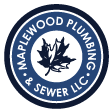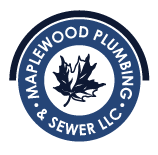
There’s a Better Way to Clean Bathroom Drains
Your bathroom sink is a workhorse. Toothpaste, mouthwash, beard trimmings, soap, facial cleaners, mud masks… you name it, your sink whisks it away so you can get on with your day (or night)!
Lift the stopper and the sink fills. Push it down and the water drains into the pipes under your home. It all works like clockwork—until it doesn’t. If you’re like most homeowners, you don’t want to know how the clock works, just what time it is, right? Same for your bathroom’s plumbing.
But when it comes to a clogged sink, understanding the inner workings of your sink’s plumbing can make it easier to identify—and potentially fix—small problems before they turn into big, expensive hassles.
So, here’s a crash course in everything you need to know about how your bathroom sink works.
Your Bathroom Sink Plumbing
Fixture holes. Your bathroom sink has either one or two fixture holes. Some of these have separate faucet handles from the spout, while others are integrated into the spout.
Supply tubes. From the faucet handles, these flexible, narrow supply tubes carry water from shutoff valves in the wall to threaded tailpieces at the base of your faucet. They are typically made of solid plastic, chromed copper, wire, or plastic mesh.
Pop-up drain stopper. The drainpipe that runs through your bathroom sink is fitted with a pop-up drain stopper (or sink stopper) that you can raise or lower by pulling up or pushing down on a knob just behind the faucet. That knob is fastened to a connecting bar that connects to a pivot rod-and-ball assembly.
Sink drain. The sink drain is equipped with a flange that is sealed to the sinkhole with plumber’s putty.
Flange. The flange in the sink drain is screwed into the drain body, which is tightened to the underside of the sink bowl with a locknut.
Tailpiece. The drain or sink tailpiece is a straight section of pipe that connects to the drain fitting trap with slip-joint couplings. The tailpiece and P-Trap (or sink trap) make up your complete drain assembly.
Sink trap. Your sink is fitted with a P-shaped sink trap filled with water so that sewer gases can’t escape into your home. This sink trap is typically bent into a letter P shape. If larger objects like chunks of bar soap or a wedding ring accidentally fall down your sink drain, they could get caught in the P-trap and cause water to back up into your bathroom sink.
Now that you know the basic parts of your bathroom sink, let’s talk about how those parts can get clogged.
What causes clogged sink drains?
There are a few common causes of clogged bathroom sink drains.
Soap
We use all types of soap in the bathroom: bar soap, liquid hand soap, face wash, body wash, cleanser… so you might think that bathroom sink drains are perfectly capable of handling this common product. The truth is that the soap you use reacts with particles in your water like calcium and magnesium ions. And this little chemistry experiment is what creates soap scum, a filmy, solid residue that produces mold and mildew and causes blockages in your pipes. Soap scum is difficult enough to remove on its own, but anything else that makes its way down your sink drain will latch onto the soap scum making the clog that much worse.
Wet hair
When wet hair builds up in the drainpipe, running water down your sink drain won’t help, and could actually exacerbate the problem by making the hair stick together, causing an even bigger blockage. Despite popular belief, it’s not just women’s hair or long hair that can get stuck in your bathroom pipes. Any amount of hair that accumulates can cause a clog, so using a strainer can help you avoid these types of clogs.
Damaged pipes
PVC pipes typically last about 100 years, so age is rarely the culprit of a damaged pipe. It’s more likely that a tree root or natural ground movement will bend, crack, or break the pipe. If you live in an old home, though, it’s a good idea to have your drainpipes checked, as they may need to be replaced or relined.
DIY Fixes for a Clogged Bathroom Sink
The bad news: Clogged sink drains and slow drains are fairly common. The good news: They’re one of the easiest plumbing problems to handle on your own.
Here are five DIY tricks you can try to unclog your bathroom sink.
DIY Fix #1: Clean the Stopper
Sometimes, hair and gunk can get stuck around the pop-up drain stopper mentioned in the above section. To remove the stopper, you may be able to simply lift it out of the drain hole opening, but if not, you’ll have to remove the pivot rod to get the stopper out. If you find the stopper covered in hair and debris, simply untangle the hair over a trash can and clean out the stopper. If it’s the pivot rod that’s tangled up, however, try using a short length of wire or a wire clothes hanger bent into a hook shape to fish out the clog. Put the rod and stopper back into place and run hot water through the drain. If your drain is still clogged, keep reading.
DIY Fix #2: Plunge it Out
If you’re like most homeowners, you probably have a toilet plunger somewhere in your house. That same tool can be used to unclog a sink. Clean the plunger well and remove the stopper. If there is no water in your sink, fill it about halfway with water and place the rubber section of the plunger over the drain opening. Push down firmly with both hands, as you would to unclog a toilet, and pull up quickly. Repeat two to three times to remove buildup and unclog your sink drain.
DIY Fix #3: Pour Boiling Water
Sometimes, running hot water down your drain for a minute or two will break up a simple clog, but if that doesn’t do the trick, get hotter. Boil a pot of water and pour it carefully down the drain opening. If the clog is in the P-trap, the boiling water should be enough to melt the gunk away quickly and easily. If after two attempts your bathroom sink is still clogged or slow to drain, you might have a bigger problem.
CAUTION: If your drainpipes are made from PVC, do not pour boiling water down the drain. The PVC pipes aren’t strong enough to withhold the heat from the water and could melt or damage the plastic and/or cause the joints in the PVC to loosen. You should also avoid this DIY tip if you have a porcelain sink, as the heat from the water can crack porcelain.
DIY Fix #4: Snake the Drain
If you’ve tried using a plunger and pouring hot water into your drain with no luck, this tool could be just what you need. Especially if the culprit of your drain clog is hair. This handheld tool is a flat strip of flexible plastic with teeth running up both sides. You’ll be able to find it at most any local hardware or home improvement store. Insert the bottom of the tool into the drain and push it as far down as it will go. Rock it back and forth before slowly pulling it back out and you should see hair and any other gunk and debris come out with the tool. Repeat several times until the clog remover tool comes out clean.
If the plastic snake drain tool doesn’t do the trick, you can purchase or rent a more robust drain auger from your local hardware or home improvement store. These tools work in the exact opposite way of the plunger. A plunger lifts the clog up and out of the drain, while an auger works its way through the clog to break it up so that it can continue traveling down the drainpipe.
DIY Fix #5: Experiment with White Vinegar and Baking Soda
If you’ve cleared away a clump of hair and/or debris but still have standing water or a slow drain, try this old school home chemistry remedy. Start by pouring about a half-cup of baking soda down the sink drain. Follow it up with a few capfuls of white vinegar. When you can see the vinegar fizzing or foaming up around the sides of the drain, you know you’ve added enough. Let the mixture sit for several minutes. Then rinse with hot running water.
A Word About Store-bought Drain Cleaners
We don’t recommend purchasing drain cleaning solutions. While they’re not necessarily “bad” for your family, many of these drain cleaners contain bleach or deodorizing chemicals that can be harmful. If you do go this route, check the labels and select a product that does not contain triclosan, sodium hydroxide, chlorine, or phthalates. Also be sure to protect your skin by wearing gloves and protective eye wear. When you’re finished using the product, store it in a locked cabinet out of children’s reach. And if you end up calling in a professional plumber, be sure to let them know if you’ve put any of these drain cleaning products down your drain so that they can protect themselves before beginning a service call.
If you’ve tried all five of these DIY unclogging techniques and still have a clogged drain, the issue is most likely much deeper in the pipes under your home. A professional plumber will be able to snake a sewer camera down for a look to see if you have misaligned pipe joints, grease build-up, or a crack or break caused by a tree root or ground movement.
Be sure the plumbing company you choose offers pipelining services. This is the most modern, cost effective, and least disruptive way to repair underground pipes.
You can help avoid clogged drains in your home by having your pipes regularly maintained. Just like your twice-yearly visit to the dentist or your annual health exam, your home’s pipes and plumbing require regular check-ups to perform at their best. We recommend scheduling a drain cleaning every 12-18 months.
Your Bathroom Drain Cleaning Experts
If you’re a resident of St. Louis City or St. Louis County in need of a drain cleaning, you can save $20 with this coupon: https://maplewoodplumbing.com/residential-plumbing/drain-cleaning/
Maplewood Plumbing and Sewer has been unclogging bathroom sink drains in St. Louis City and St. Louis County homes and businesses for more than 40 years. We have an A+ Better Business Bureau rating and are a top-rated HomeAdvisor company, as well as an annual Angie’s List Super Service Award winner. Our family-owned plumbing company prides itself on our solid reputation in the community. Give us a call to schedule your camera inspection and see for yourself why our loyal customers won’t use anyone else!
We offer a one-year warranty on all parts and labor excluding washers.
We are also experts in kitchen plumbing, basement plumbing, bathroom plumbing, outdoor plumbing, pipelining, laundry room plumbing, water heater installation, and remodeling services.
Give us a call at 314-645-6350 or fill out the contact form here to request a quote.


